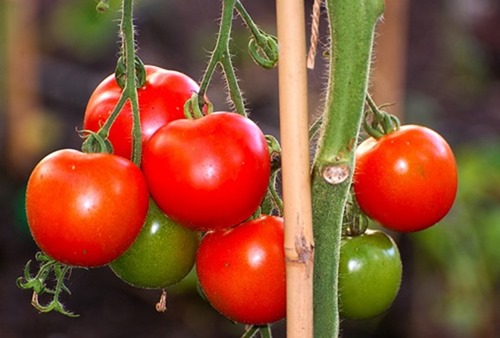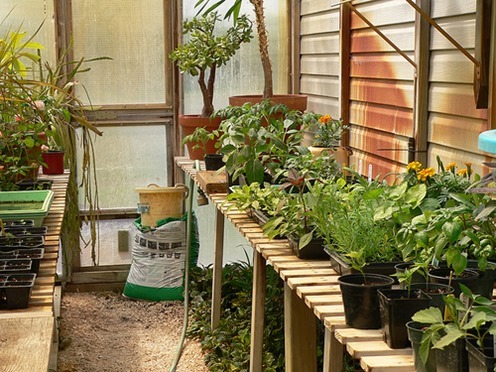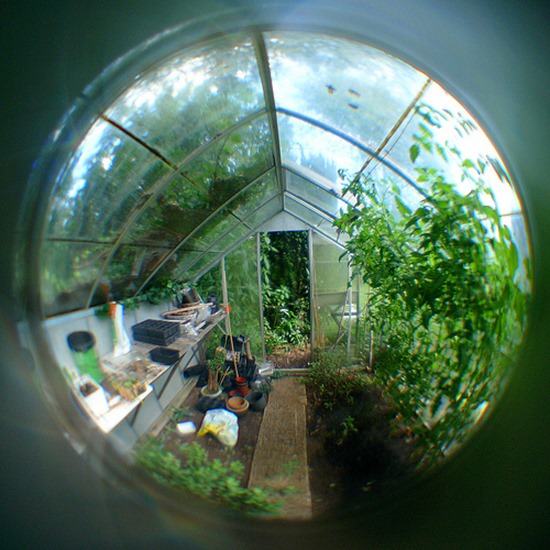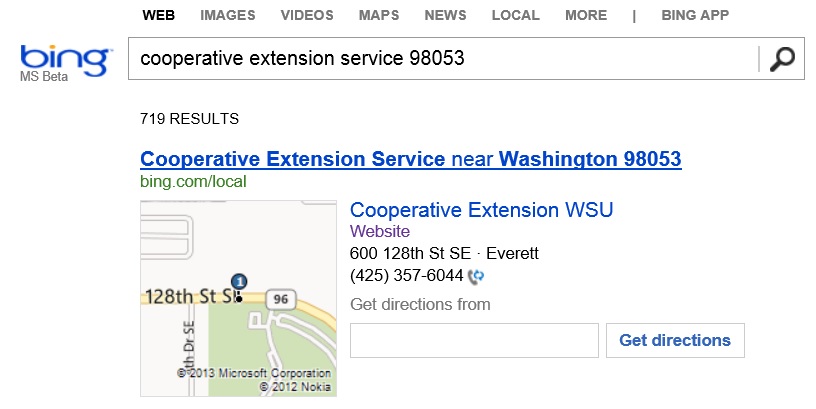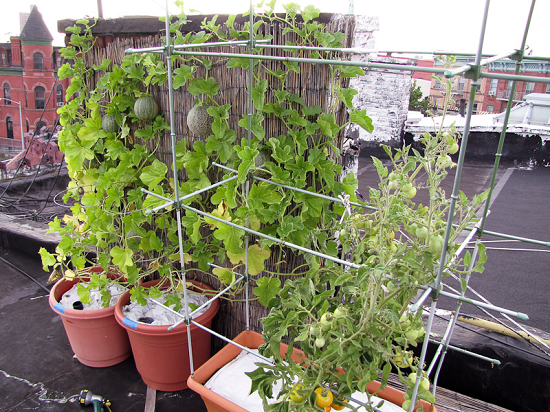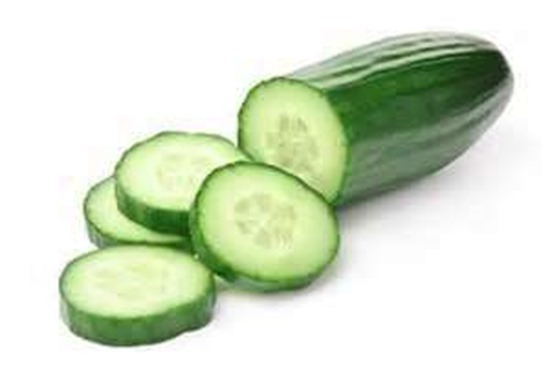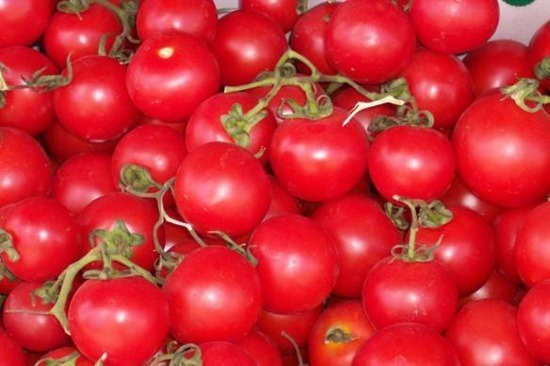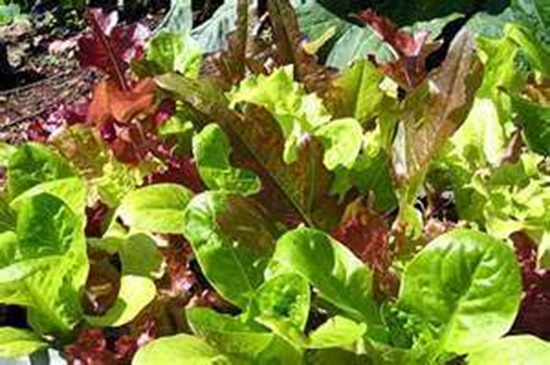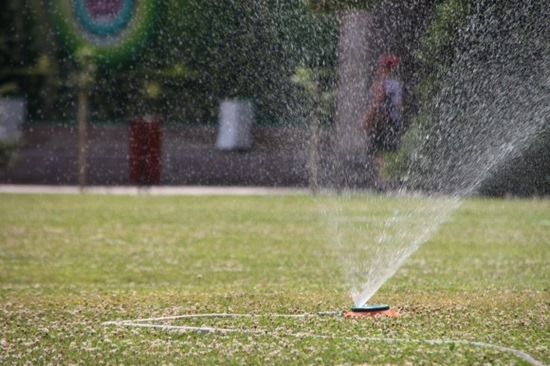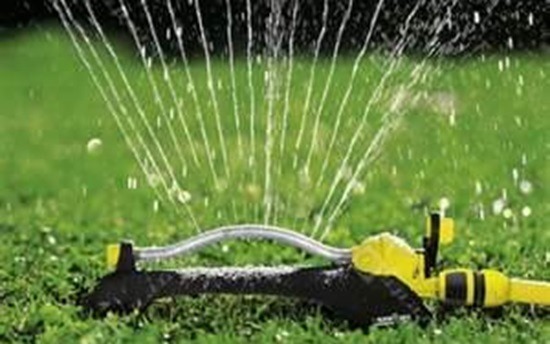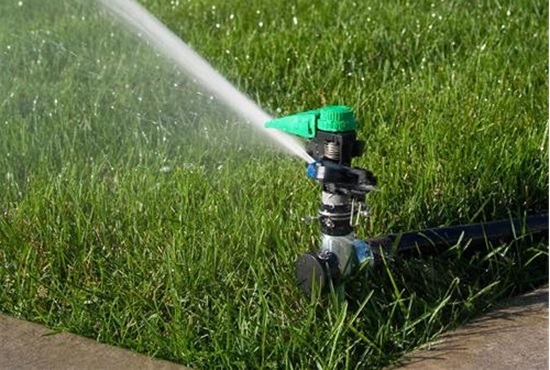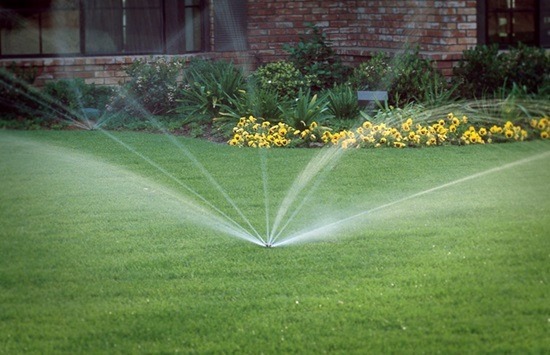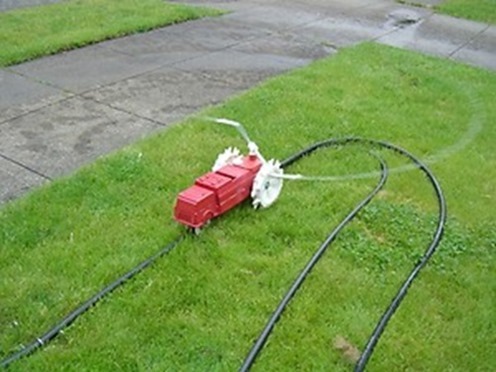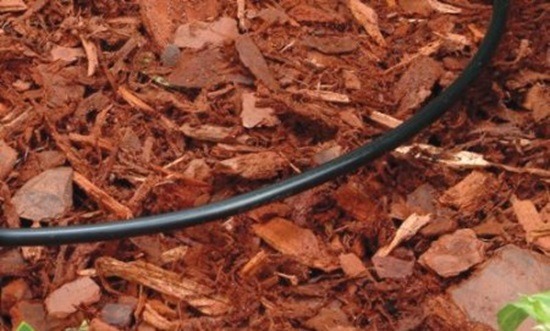Recent Articles
Building Your Greenhouse For Success
11.3 years ago cheap, DIY, greenhouse, guest post 4 Comments
Most of us think of building and maintaining greenhouses as a labor of love, a fulfilling hobby, or simply an aesthetic pursuit. We invest our time, effort, and money into greenhouses for the joy of gardening and the sake of surrounding ourselves with beauty. But efficient greenhouses can also give back in more explicit ways. From filling kitchens with fresh produce to supplementing incomes and increasing property values, greenhouse success can translate into personal success in countless ways and look like a thing of beauty surrounded by exotic flowers.
Of course, the primary benefit of a greenhouse is the control it affords. A well-made greenhouse will overcome seasons, sudden temperature shifts, and blights of harmful insects. In the UK, where wintertime freezes it makes gardening impossible, with a greenhouse we can cultivate exotic species and delicate produce, while substantially extending the growing season. To optimize space, the best greenhouse plants are those with the largest flowerings and blooms relative to their size. The more dense and diverse a greenhouse, the more efficient it will be, and the fewer resources it will require to equalize temperature and humidity. Green onions, hanging patio tomatoes, peppers, and carrots are efficient growers with consistently high outputs. Narcissus and Snapdragon are large blooming flowers with relatively low space requirements
Designing Your Greenhouse
Careful planning is the key to optimizing your greenhouse’s potential. This starts with construction and continues with each new plant addition. Most greenhouses will need to be oriented North-South, to extend the growing season and maximize sun exposure. In some cases, however, due to local wind threats or special crop requirements, an East-West orientation will be more efficient, as it best utilizes light during the earliest and latest growing seasons. But no single building plan is best for everyone. The decision depends entirely upon geography and local climate.
Thoughtful planning must go into how the greenhouse is constructed, thinking about how to minimize waste and prevent costly, avoidable problems. Plan by talking with your plumbers about this so you know what access to water pipes you have, what would be needed to be built in place for water access and the cost this may involve. All this will help maintain the greenhouse in the future so is worth planning well from day one.
The next important stage is to consider how best to utilize existing resources rather than buying unnecessary implements. Is there an abandoned outbuilding on your property? Old windows lying around? Perhaps an addition to a detached garage or boathouse can help circumvent the need to build a freestanding structure. Maybe a fragment of a low-lying wall can serve as a building platform. The beauty of greenhouses is that each is unique. No single design trumps the others. Lean-to structures, triangular houses, and arched-roofs have the potential to work equally well. In regions where the weather permits, plastic sheeting and PVC can replace glass and wood. Inexpensive aluminum piping is a sturdy and easily assembled option for those in harsher climates. Ultimately, the most successful greenhouses are designed for longevity. Keep in mind that greenhouses are wet environments, so wood structures will need to be sanded, primed, and painted to avoid rot.
Many minor additions can drastically improve greenhouse productivity, stability, and sustainability. Simple rainwater and dew collection systems can lead to substantial water savings. Ventilation fans (purchased at any local hardware store) make humidity regulation easy, moisture meters and thermostats allow for scientific precision and will facilitate year-to-year refinements, a portable potting bench will prevent countless head- and back-aches, and cheap solar lighting is an eco-friendly, wireless solution. Many simple solar lights can be purchased for around £60-£100. For those who need artificial heating, the best option is electric. It is emission-free and relatively efficient. But be sure to eliminate droughts wherever possible to prevent heat loss and reduce energy costs. Also clear away or trim back nearby trees to prevent potential damage and maximize light.
Economic And Lifestyle Benefits
As the prices of organic produce continue to climb, greenhouse gardening is becoming more and more economically logical. Not only does home growing ensure your family eats the cleanest and healthiest produce, it can also be a fulfilling business venture. By selling to local farmers markets or organic co-ops, many gardeners can at least cover greenhouse expenses, and some larger greenhouses can even become quite lucrative. Growing and selling local is also an important environmental contribution: one that is more important than ever in our rapidly globalizing world economy. And with the holidays fast approaching, don’t forget that hand grown plants make wonderful gifts.
But even despite the many material benefits of gardening, at the end of the day the best aspect of a greenhouse is its function as a sanctum. Greenhouses are therapeutic places of beauty, serenity, and growth. They are a place to find balance and release stress. So take this into careful account when designing your greenhouse space. Add personal decorative touches. Consider installing a simple macadam walkway, a reading nook, wooden scrollwork, a stained-glass windowpane, or a swing seat. Plan your floral arrangements with soothing palettes in mind. It is true that successful greenhouses are a healthy economic investment. But, far more importantly, greenhouses are an investment in the health of body and mind.
—
Author: Jenny Beswick loves home improvement ideas and making her garden the focus point in her home design. Consulting with a London Plumber, careful planning and creative designs are a few steps forward to a successful greenhouse. Keep us informed on how your development plans out!
Free Gardening Books
11.3 years ago book, free, vegetables 2 Comments
The great thing about home gardening is that people have been doing it for thousands of years and even better writing about for at least the last few hundred. Fortunately this provides us with a great amount of knowledge of from many generations back.
What’s even better many of these get gems are under the public domain so they are completely free gardening books to have as a resource to read online and is even available in EBOOK format to take with on your favorite. To check out these great books yourself check out Google Books with the public domain filter enabled.
Currently I am checking out “The home vegetable garden” by W. R. Beattie in printed in 1906. Sure it doesn’t have a real catching marketing title but provides some great tips and makes use of low cost solutions to the same problems we come across today. One of my favorite finds was this handy Planting table:
Update: Max mentioned in the comments of another great resource your local Cooperative Extension Service just go to Bing.com and type “Cooperative Extension Service” and then your zip code to find your local office and get some great local info.
So check these out and let me know what treasures you find in the comments.
Growing Vegetables in the City
11.3 years ago city gardening, container garden, urban gardening 2 Comments
The days when city dwellers had no hope of growing their own vegetables are rapidly becoming a thing of the past, as urban farmers discover ever more ingenious ways to squeeze growing space into the most compact area. Window boxes, balcony planters and even blank walls can be put to good use as growing space for healthy and economical vegetable production, and the beauty of a tightly contained ‘garden’ is that the environment can be strictly controlled, ensuring that pests are kept away and no harmful chemicals creep into the organic compost or soil.
Legumes thrive in planters and can stand being planted quite close together. Even a relatively short planter, of approximately 70cm to 1m can yield enough beans or peas to feed a family every other day for the duration of the harvest season. Providing a climbing frame for these vegetables will give the plant greater height, which will allow a bigger yield of tasty and nutritious vegetables for your table.
Carrots lend themselves well to being grown in a container. If the pot or planter is relatively shallow, it would be advisable to choose ‘dwarf’ varieties which tend to be shorter. Carrots must be sown thickly, with about a 5cm covering layer of soil or compost, and then thinned out once they have sprouted to be sure each carrot has enough room to grow out.
Cucumbers, eggplants and melons can all be grown in a rooftop or balcony garden but all of these plants require a fairly generous and deep container. As a rule of the thumb a half-barrel, or two motor-vehicle tires laid one on top of the other is the sort of space needed, so growing these plants will very much depend on the space available to our bijou gardener. Cucumbers and melons, particularly, need space to spread, being ground-creepers that are not easily able to climb. Attention must be paid to the fruits as they grow, they often sit on the ground which means they can be prone to insect depredation and rotting. An eggplant forms a rather attractive bushy plant which can be very decorative, the effect being enhanced when it has a couple of the shiny purple fruit forming.
Tomatoes are very versatile and will grow under most conditions. The bigger varieties need a large deep pot, and a stake to keep them upright once they have reached maturity. Smaller types of tomato, like the cherry tomato can even grow in very small pots, but in general, the larger the pot and the plant, the higher the yield and the longer the growing season will be. Tomatoes must not be allowed to sit in standing water as this can cause the plant to start rotting away.
Lettuces adore being grown in pots and planters, they positively thrive in that situation, mainly because it is very much easier for the gardener to ensure that the lettuces are in the right environment for optimum growth. In general, growing lettuces can be as simple as sprinkling in some seeds, making sure the soil stays moist and getting ready for a healthy feast as they grow to full size. Lettuces in a garden bed can be tricky as too much water is dreadful for them, causing the plants to rot, while not enough water creates a small bitter-tasting leaf. Planters generally have drainage holes at the bottom which automatically maintain the moisture level of the soil, taking some of the guesswork out of proceedings.
Many species of vegetable can be grown in pots and containers and the best advice would be to try one or two specimens and see how they do. Organic vegetables may benefit from fish or blood-and-bone meal fertilizers to give them a boost, but if you are using any of the patented organic composts that are readily available at gardening centers and DIY shops you may not need to add any extra nutrients to the soil. Organic produce is easily protected from insects, parasites and diseases when it is grown far from other plant-life, a boon to the urban vegetable grower.
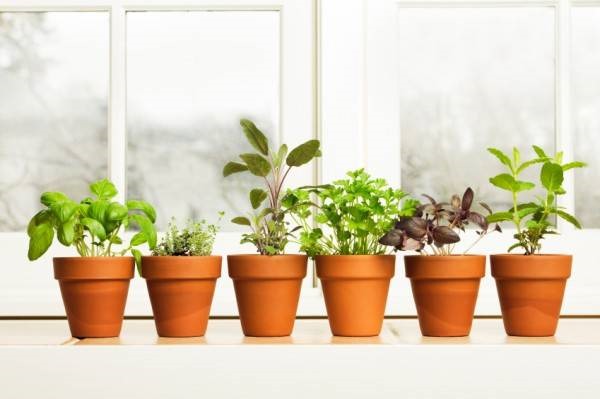
If you are strapped for space, but desperate to grow food or flowers, have a look at your window-sills with a view to fitting in a window-box, examine hidden corners to see if there is space for a deep planter or a strawberry pot, and even study the walls of the outside of your house or flat: vertical gardening is becoming fashionable, with pots and planters being layered up a wall to make maximum use of the space available. As long as you have a space that attracts at least six hours of sun per day, you too can become an urban gardener!
—
AUTHOR: Thomas Jones is a keen gardener, renovator and DIY enthusiast. Having lived and worked in the city, he’s learnt a few tricks on how to grow good produce. Thomas currently works with Falcon Pools.
Rooftop garden image Source: http://www.bucolicbushwick.com
Things to Know before Installing a Sprinkler System
11.3 years ago DIY, sprinker system, water Leave a comment
Sandy soil, clay soil, grass types, it can be a lot to take in. And knowing exactly how to water your lawn to keep it green and healthy can be a task. However, automatic sprinkler systems can help ease your burden. But a sprinkler system isn’t a one-and-done type of project. It takes planning, preparation, and time to achieve your goal of installing an automatic sprinkler system. Here are a few things you’ll need to do prior to installing your new system.
Need a Permit?
One of the most commonly overlooked tasks when homeowners install sprinkler systems is checking with your locality to see if you are required to obtain a building permit to install your system. Now, you may be scratching your head and asking, “Why would I need a building permit? I’m installing something underground on my property.”
Well, when it comes to sprinkler systems, you aren’t simply laying piping down in the ground and connecting a hose to it. There is a good deal of wiring that goes into it, and your city or county may have requirements you must meet prior to installing your system. While most contractors will take care of all your permit needs, if you are planning on installing yourself, you will need to do your due diligence and contact the proper locality to determine what permits you may need.
Check for Underground Utilities
Prior to planting your shovel into the ground, you need to check for any underground utilities that may be in your yard. This is not just a safety concern, it is required by law that you check for utilities prior to digging on your property. Some utilities are not far beneath the surface, and even a relatively shallow dig can get you in a world of trouble.
Digging without knowing where your underground utilities are located puts you in harm’s way. Knowing where your utility lines are buried will help protect you from injury and prevent damages to your utilities, service disruptions, and potential fines and repair costs. Even if you’ve called before for a similar digging project, call again. Every job requires a call to your utility providers to ensure your safety and your neighborhood’s utility service.
Local Watering Ordinances
Lastly, you’ll want to check all of your local watering ordinances to see if you must adhere to certain watering restrictions. Many municipalities have responded to water shortages and droughts by implementing laws that restrict how many times per week you can water your lawn, for how long, and in some cases, have implemented laws dictating when you can water your lawn. To verify any watering ordinances for your area, you can search online for your city and county water restrictions to see which restrictions, if any, apply to your location.
Finding the Right Sprinkler for Your Garden
With the right watering habits and right system for your garden, you can enjoy a healthy lawn and garden each and every year. However, it’s important to know which type of sprinkler system is best for your needs.
There are several factors to consider when choosing your new sprinkler system. You may even be best suited to utilize more than one type of sprinkler to ensure your yard and garden are covered. Here are some questions to ask yourself as you shop for the right sprinkler system for your garden.
- > How large is the area that needs to be watered?
- > How frequently should you water?
- > What is the climate like in your region?
- > How can you most effectively water those hard-to-reach areas in your garden?
Types of Sprinkler Nozzles
When you’re in need of a sprinkler system, knowing the differences between the different types of sprinklers will help you choose the best fit for your lawn. Fixed sprinklers feature several different designs that cast water in a single pattern over a fixed area. They offer fast and precise watering, and can water those hard-to-reach areas and are ideal for small areas, gardens and landscaping, fixed sprinklers.
Oscillating sprinklers have a long tube with numerous openings and move back and forth, creating a fan-shaped waterfall. Best for medium- and large-sized areas and areas that are newly seeded, oscillating sprinklers provide you with gentle watering, even coverage, and are best for covering a rectangular or square pattern.
Impact sprinklers, also known as impulse sprinklers, are those which rotate in a circle and shoot a single jet of water and make a distinctive clicking sound when in use. Best for large areas, impact sprinklers are very wind-resistant, are less likely to clog, offer an adjustable pattern, and provide you with lower water pressure and flow rate.
Rotating sprinklers, best for gardens and medium-sized areas, have two or more arms and spin to disperse water in a circular pattern. The benefits of a rotating sprinkler include even water distribution, they often feature adjustable jets and bases, and they work quickly.
Traveling sprinklers, which resemble little tractors, move through your yard in a preset pattern. These mini-tractors drag the hose behind them as they water your yard. These are great for using in a wide area, and can save you time watering your yard and garden. Traveling sprinklers are best for areas that are uneven, and yards that are oddly shaped.
Drip Irrigation
Drip irrigation, a combination of several low-pressure, low-volume water delivery systems, is also known as a micro-irrigation system. Each system is distinguished by a different style of water emitter. Originating with commercial growers and farmers, drip irrigation systems are now a popular option for home gardeners who desire to conserve water.
These systems are the best way of getting the most from your plants while maximizing your water resources. Drip irrigation systems tend to use less water than conventional watering techniques and systems, as they aim to keep the plant’s roots moist without saturating. Drip systems are often installed in the subsoil, where they can be hidden beneath a layer of mulch.
Great for long strips of lawn, oddly shaped gardens, and raised beds, drip irrigation systems offer a low flow rate, easy installation, and allow you to target the exact area where you want to water, and allows you to deliver it exactly when you want when used with a timer. Other benefits of drip irrigation systems include their ability to deliver water without creating an overly moist environment, helping keep fungal diseases from your garden, and they improve the water-holding capacity in sandier soils.
Rachael Jones is a Staff Writer for DIYMother
Create your own organic kitchen garden in 2013
11.3 years ago garden planning, guest post, kitchen, organic, vegetables 3 Comments
With a continued focus on healthy eating this year and the recommendation to eat healthy, organic foods where possible, what better way to incorporate the two by creating your very own organic kitchen garden in 2013. With a little planning and imagination you’ll soon experience the joys of planting and growing your own food that will see you kitchen stocked with fresh produce all year round. Celebrate the seasons and get in touch with the foods that should be cooked with and consumed throughout the different cycles of the year and you’ll be sure to be taking in maximum vitamins with every bite without any of the pesticides.
So how do you get started? The first thing you need to consider is the available space you have within your garden to dedicate to growing food. You’ll need a bright sunny spot that is relatively sheltered from the winds and ideally as flat as possible to allow for even water distribution across your plot. Make sure you have easy access to the plot, ideally locating it as close to your kitchen door as possible to ensure you can reap the benefits of popping out into the garden whilst cooking to pick your herbs and vegetables for your meal.
To achieve the best results, start off simple and choose vegetables that are known to be easy growers such as lettuces, Swiss chard and chives. Add to this some tasty beetroots and radishes and you’ll soon see just how much fun growing your own food can be. To achieve success with your vegetable growing you need to ensure that your plants have access to as much sun as possible – ideally at least 6 hours each and every day.
If your garden tends to fall into the shade halfway through the day you might want to consider planting directly into containers rather than the ground to allow you to move your plants into the sunny areas with relative ease. As the seasons change and the position of the sun moves around your garden you might find this one of the most valuable tips to consider.
Container growing also opens up the opportunity for those people without gardens to participate in growing their own food and can do very well on even the smallest sunny balcony or patio. All you need to do is ensure that your pots are large enough to take the full growth of the plant, add plenty of drainage holes and water on a daily basis. For best results add a liquid fertilizer once every fortnight and you’ll soon start to see results.
If you have a sunny window in your kitchen this is a great place to grow your favorite herbs from and fills the space with an incredible aroma. It’s also the ideal place to start off tomato plants, bell peppers and squash that benefit from that extra bit of nurturing and protection in the early days. What’s more, bringing your organic garden directly into your kitchen in this way is incredibly inspiring when meal planning.

Like these planters? I found them here
Before planting your seeds you need to ensure that your soil is as fertile as possible. Add essential nutrients by working the soil through with rich compost manure and high quality fertilizers before you get started to guarantee your end result of delicious, healthy produce. On top of this you will need to maintain a regular watering routine, depending on the weather and soil you have planted into and the types of vegetables you are growing. As a general rule, leafy vegetables need to be watered more frequently than root vegetables. Be sure to add proper drainage to your soil to allow your vegetables to have the best chance of growing fully. Compost or bark chippings achieve this for you easily.
With all this in mind you are now ready to plan your own organic kitchen garden to ensure you are supplied with tasty, home grown food all year round. With some daily dedication to your plot you’ll enjoy following the seasonal patterns of planting, pest control and feeding as you watch your vegetables grow, inspiring you with ideas for new recipes to experiment with for highly nutritious, cost effective and deliciously organic mealtimes.
Author Bio: The article is being written by Peter Smith. He loves to renovate his home every year for purchasing new furniture or accessory he trusts the brand Mayer Blue.
Encourage Green Fingers (of the Tiny Variety)
11.3 years ago cheap, guest post, kids, square foot gardening Leave a comment
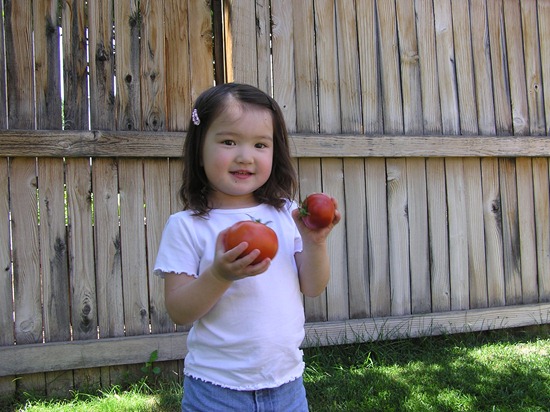
There’s nothing quite like letting a child grow their own vegetables to encourage a fussy eater to try new foods. Kids love to get out in the garden and plant their own veggies (preferably getting as dirty as possible in the process). The only frustration that you might encounter is that seeing results can be a bit of a waiting game, especially for those kids who plant seeds in the morning and expect the fruits of their labor to be ready for consumption within just a few hours! Here’s our top tips for growing vegetables with kids.
What you’ll need …
- Seeds are the starting point for any green fingered adventure. No really! If money is tight, there are numerous ways to get your hands on free vegetable seeds. Just be sure to involve your kids as this will make the whole thing seem even more exciting.
- You’ll also want to get hold of some kid friendly gardening tools. The grown up versions are just too heavy for little hands, not to mention potentially very dangerous.
- A dedicated area of the garden just for them. That is unless you could live with tiny hands pulling up your prize radishes before they’re ready to go and tiny (but surprisingly heavy feet) stomping all over your baby lettuces.
What you should grow …
As mentioned kids like nothing better than instant gratification. There’s not a whole lot of that around in the pursuit of gardening. Although you might very well derive a sense of inner satisfaction from seeing a freshly laid row of seeds, kids often fail to see the attraction. The next best thing to instant gratification is perhaps continual gratification, so draw yourself up a schedule of what is going to ready first and plant accordingly. Once you’ve been going at it for a while, you should be able to come up with a schedule that yields regular results.
- 1. Cress. We all know cress is not the most exciting thing in the world, but it grows super fast and because of that it’s always a great place to start. Nothing else is going to give you something that’s ready to eat in around a week, plus kids can grow funny cress hair in broken egg cups. What’s not to love?
- 2. Beans. Another thing that gives kids those quick results they yearn for is beans. They’ll love making a little “tee pee” using bamboo stakes tied together in a pyramid shape. The vine will start to grow within about ten days. It can be fun for kids to watch how quickly the vine shoots up (measure every few days to monitor progress), not to mention the possibility of them starring in their very own version of Jack and the Beanstalk.
- 3. Cherry tomatoes. Nothing says instant gratification than a food you can eat right off the plant. Go for a variety of different colors to up the fun stakes and without too much delay your kids can start enjoying these sweet, healthy snacks. Just don’t be under any kind of illusion that even one of the cherry tomatoes will reach the kitchen.
- 4. Potatoes. Growing potatoes can be immense fun with children since when it comes to harvesting time it can rather feel like digging for buried treasure. “I don’t like digging for treasure” said no child ever! It’s undoubtedly a lot of fun, but you must always make sure that children don’t eat the toxic leaves, sprouts, and fruit stems of the plant. For this reason, unless supervision is guaranteed, save the potato growing for older children.
- 5. Pumpkins. What child would ever pass up the chance of growing their very own Jack O Lantern? Not many, that’s for sure! We love the tip provided by Erica over at Northwest Edible Life who advises that a child’s name carved into the green skin of a softball sized pumpkin will scar over and retain the carving as it grows to maturity. The result is rather fabulous personalized pumpkins.
- Why not try introducing your children to the delights of growing their own vegetables? It may or may not solve a fussy eating issue, but even if it doesn’t, at least you will have both had fun trying. Isn’t that what parenting is all about?
Author Bio
Linda Forshaw is mum to five year old Freya. As well as being a regular contributor to college resource site Degree Jungle, Linda is a full time writer and blogger specializing in education, social media, and entrepreneurship. Contact her on Twitter @seelindaplay
